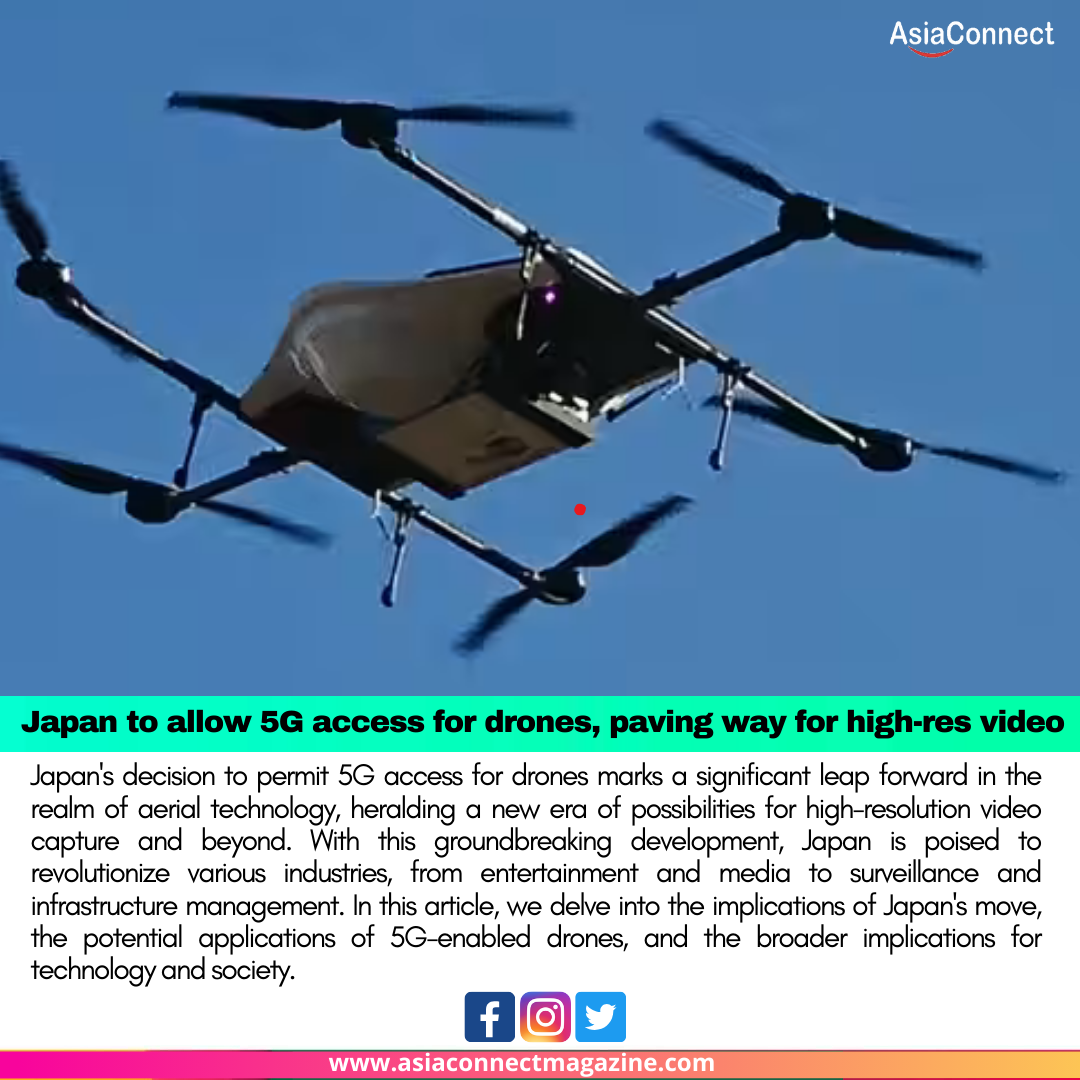Japan’s decision to permit 5G access for drones marks a significant leap forward in the realm of aerial technology, heralding a new era of possibilities for high-resolution video capture and beyond. With this groundbreaking development, Japan is poised to revolutionize various industries, from entertainment and media to surveillance and infrastructure management. In this article, we delve into the implications of Japan’s move, the potential applications of 5G-enabled drones, and the broader implications for technology and society.
- The Intersection of 5G and Drone Technology: Japan’s decision to grant 5G access to drones represents a convergence of two cutting-edge technologies. 5G, with its unparalleled speed, low latency, and high bandwidth capabilities, promises to unlock the full potential of aerial drones, enabling real-time data transmission, high-definition video streaming, and seamless connectivity like never before.
- Paving the Way for High-Resolution Video: One of the most immediate and impactful applications of 5G-enabled drones is the ability to capture and transmit high-resolution video in real-time. With 5G’s robust infrastructure, drones can transmit ultra-high-definition footage seamlessly, revolutionizing industries such as filmmaking, journalism, sports broadcasting, and live events coverage. This breakthrough promises to elevate the quality and immediacy of visual storytelling, offering audiences immersive and engaging experiences.
- Transforming Industries and Services: Beyond entertainment and media, 5G-enabled drones have the potential to revolutionize a wide range of industries and services. In agriculture, drones equipped with high-resolution cameras can provide farmers with real-time insights into crop health, soil conditions, and irrigation needs, enabling precision agriculture and optimizing yields. In construction and infrastructure management, drones can facilitate aerial surveys, site inspections, and asset monitoring with unparalleled accuracy and efficiency.
- Enhancing Safety and Security: The integration of 5G and drone technology holds immense promise for enhancing safety and security measures. Law enforcement agencies can leverage drones equipped with high-resolution cameras and facial recognition capabilities for surveillance and crime prevention. Search and rescue operations can benefit from drones’ ability to cover large areas quickly and transmit real-time video feeds, improving response times and outcomes in emergency situations.
- Accelerating Technological Innovation: Japan’s decision to embrace 5G-enabled drones underscores its commitment to fostering technological innovation and maintaining a competitive edge in the global market. By leveraging the synergies between 5G and drone technology, Japan aims to drive advancements in artificial intelligence, machine learning, computer vision, and data analytics, paving the way for new breakthroughs and applications in various sectors.
- Addressing Regulatory and Ethical Considerations: While the integration of 5G and drone technology offers immense potential, it also raises important regulatory and ethical considerations. Privacy concerns, airspace management, spectrum allocation, and cybersecurity are among the key challenges that policymakers and stakeholders must address to ensure the safe and responsible deployment of 5G-enabled drones.
- Looking Ahead: As Japan embraces the era of 5G-enabled drones, the possibilities for innovation and progress are limitless. From revolutionizing industries and services to enhancing safety and security, the integration of 5G and drone technology promises to reshape the way we live, work, and interact with the world around us. By harnessing the power of cutting-edge technologies and fostering collaboration between industry, government, and academia, Japan is poised to lead the way in unlocking the full potential of aerial drones in the 5G era.





